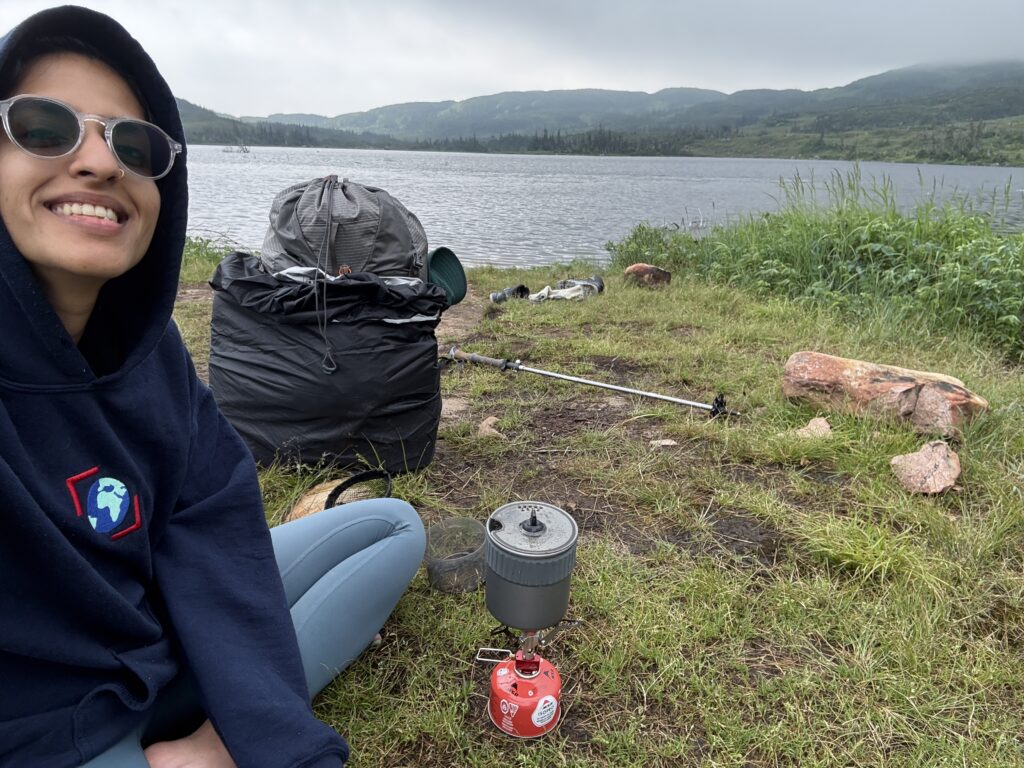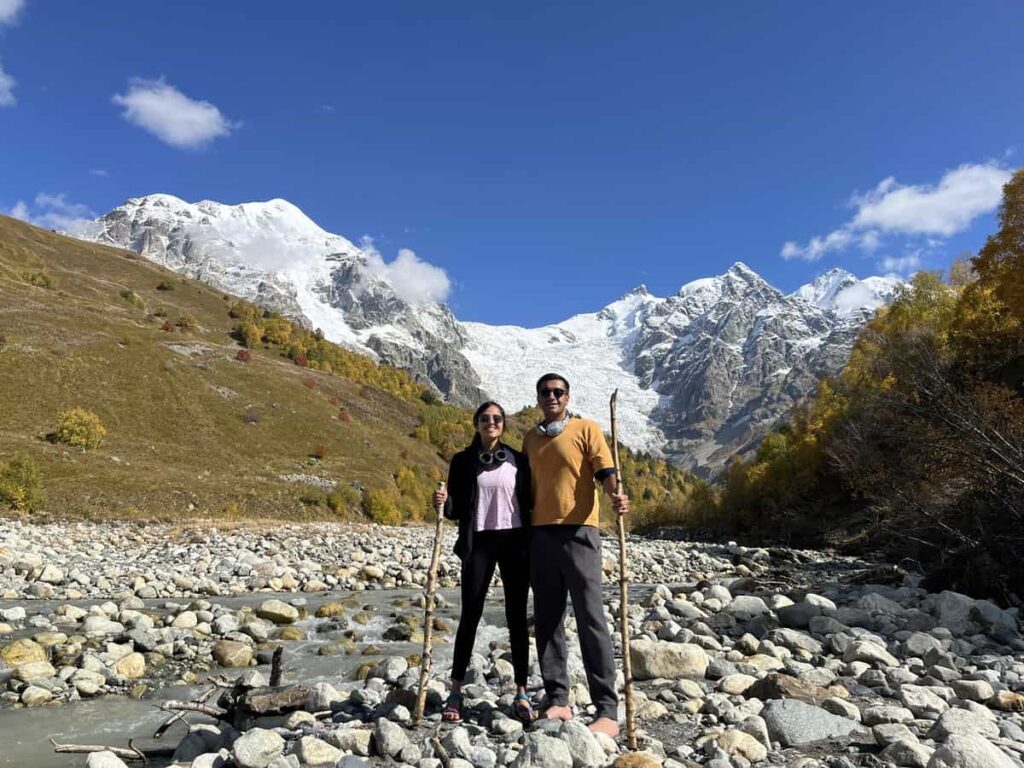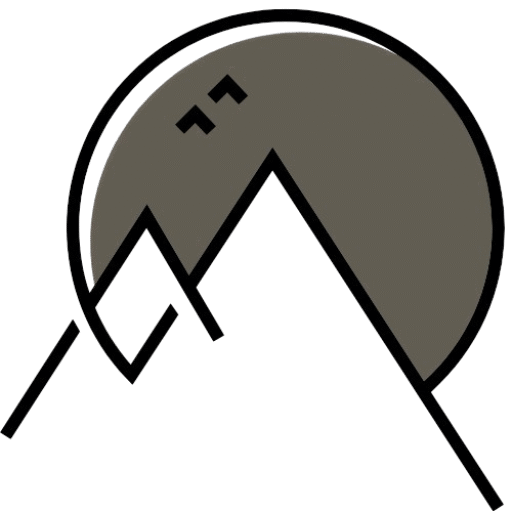I’ve been hiking since I was 18 – which, honestly, felt a little late to the party. In those first few years, I made every possible mistake. I camped on glaciers in a sleeping bag meant for cool summer nights, wore secondhand shoes that had seen better decades, and convinced myself that “luxury” gear wasn’t real hiking. If I wasn’t shivering, blistered, or soaked through, was I even outdoors?
Fast forward 12+ years, and I’ve put in miles across the Karakorams, Himalayas, Caucasus, Rockies, Andes, and Alps. Somewhere along the way, I realized comfort and minimalism can actually coexist – and that suffering for the sake of “authenticity” doesn’t make a hike more meaningful.
So this post is for you: my complete list of ultralight backpacking gear. It’s minimalist without being austere, comfortable without being bulky, and tested on real trails. My hope is you’ll skip the rookie mistakes I made and head into the backcountry with gear that actually works.
My Big Three
When it comes to backpacking, there are three pieces of gear that matter more than anything else: your pack, your shelter, and your sleep system. Collectively called the “Big Three,” these are usually the heaviest items in your bag, and getting them right makes all the difference. Lighter gear here doesn’t just save weight – it can change how far you hike, how well you sleep, and how much you actually enjoy being outside.
Backpack
My current pack is the Gregory Maven 48L – a recent upgrade after years of carrying whatever secondhand gear I could get my hands on. I almost went for the Osprey Aura, which was also incredibly comfortable, but I ultimately liked the Maven’s fit better.
One thing you’ll notice with most ultralight packs (including the Maven) is that they don’t come with endless compartments. It’s not laziness on the part of the designers – it’s intentional. Extra zippers and dividers add weight, complicate the structure, and can interfere with how well the pack transfers weight to your hips. Fewer compartments = less shifting, more stability, and fewer failure points.
The Maven’s 48L size works well for me: big enough for multi-day hikes but small enough to keep me disciplined about what I carry. My partner carries a 60L, which definitely fits more, but I find 48L hits the sweet spot for comfort without bulk.
One downside: the Maven doesn’t come with a rain cover. Some packs do, but if yours doesn’t, I recommend picking one up separately. I use this rain cover from Amazon, which has held up well through some brutal downpours on our Long Range Traverse in Newfoundland.
Tent
Our current shelter is the Nemo Osmo 2P, and honestly, it’s been a game-changer. At just 2 lbs (950 g) and packing down to 12.5 × 7.5 × 3.5 in, the weight and size were the main reasons we went for it – every ounce counts when you’re carrying your home on your back.
We’ve used it on the Long Range Traverse in Newfoundland, on canoe camping trips in Algonquin and Killarney, and a weekend camping on Manitoulin Island. It’s held up through heavy rain and wind without issue, though on one especially dewy morning we did wake up with condensation inside. That seems to be more about humid conditions than the tent itself, but it’s a reminder that ventilation and pitch angle really matter with ultralight shelters.
It’s not the cheapest tent out there, but for the balance of comfort, durability, and weight, I’ve been really happy with it so far. If you’re curious, it’s available at REI, MEC in Canada, or on Amazon here.
Sleeping Bag & Pad
What can I say – I’m a Nemo girl. Both Dani and I carry the Nemo Riff 15, rated to –9 °C (15 °F). Same model, but his is lighter because Nemo tests their bags for real comfort levels – men generally sleep warmer, so the men’s version has a bit less insulation. The specs back it up: his comes in about half a pound lighter than mine.
On warm summer nights in Ontario, the Riff can feel too cozy, so I usually just unzip it a bit. Back in my “cheap gear” era, I borrowed a sleeping bag for a trip to Khaltaro Valley, Pakistan and barely slept. That was the moment I realized a good bag isn’t a luxury, it’s essential.
Underneath, I went without a pad for years. Recently, I picked up a budget pad from Amazon. It’s not fancy, but compared to nothing, it’s a massive upgrade.
As for pillows, I usually ball up a hoodie. Dani disagrees – he uses an inflatable pillow and insists I join the pillow club. Maybe one day I will.
Clothing & Footwear
Hiking Boots
I’ve had the same relationship with hiking boots for over a decade – once I find something that works, I stick with it. My Lowa Renegade boots were with me from age 18 until just last year. After traveling to more than 30 countries and countless hikes, they were finally beyond saving. I bought the exact same pair again, just in a different color. Why mess with something that’s not broken?
Boots are personal, though. The best advice I can give is to try different ones on and see what feels right for your feet and the terrain you’ll be on.
Hiking Sandals
When I want something lighter, I slip into my Teva sandals. I’ve had mine for five years now, and they’re one of the best investments I’ve ever made. My entire nomading year – from beaches in Vietnam to hikes in Patagonia – was spent in these sandals. They’ve handled city life, mountains, canoeing, and long trail days with ease.
As someone with flat feet and limited shoe options beyond sneakers, they’ve been a game changer.
Socks
Good socks make a world of difference. I use merino wool hiking socks instead of cotton – they breathe better, dry faster, and don’t leave your feet feeling swampy after a day on the trail.
Clothing System
For clothing, I keep it simple. Layers are everything when you’re backpacking:
- Base layers: I use Uniqlo HeatTech, which packs light and keeps me warm.
- Insulation: Any good puffy will do. I’ll splurge on one and update this section when I’ve tested a favorite.
- Rain gear: Jackets are personal – I’m still hunting for the perfect one. Rain pants, on the other hand, I’m less picky about. I currently use these budget rain pants from Amazon, and they’ve worked fine so far.
- Camp clothes: one clean outfit to change into after hiking.
- Underwear & socks: I pack fresh underwear per day, and rotate socks depending on the trip length.
Packing Formula for Clothes
A good rule of thumb is:
Underwear → 1 per day
Socks → 1 per day (plus 1 extra pair in case of wet conditions)
Shirts → 1 per 2 days (you’ll re-wear)
Bottoms → 1 for the whole trip (unless it’s super muddy/wet)
Sleep clothes → 1 set kept clean and dry
Insulation layer → 1 (puffy or fleece, regardless of trip length)
Rain gear → always 1 jacket, rain pants optional
Example: For a 5-day hike, that’s 5 underwear, 6 socks, 3 shirts, 1 bottom, 1 sleep outfit, 1 insulation, and 1 rain jacket.
Cooking Setup
Stove & Fuel
For cooking, I use the MSR PocketRocket canister stove. It’s small enough to fit in the palm of my hand, weighs just 2.6 oz (74 g), and boils water in about 3.5 minutes. Perfect for two people, and honestly all you really need for backcountry meals.
Most of our food is dehydrated – easy to pack, easy to cook. If you’re in the US, REI has a great selection; in Canada, MEC does too. My favorite is Mountain House lasagna. It’s supposed to be two servings, but I’ll confess: I almost always eat the whole thing myself. And I’m a small person.
Cookware
I keep cookware minimal. I grabbed a cheap collapsible mug and a set of sporks from Amazon, and they’ve worked just fine. Nothing fancy, just light and functional.
If you want to get fancy with coffee or hot meals, there are great collapsible pots and kettles out there. But honestly, I find one pot and one spork are usually enough.
Fire Starting
Nothing complicated here – just a lighter. I usually carry a backup as well (either waterproof matches or a small ferro rod) because the last thing you want is no way to get your stove going.
Food Storage
Where I hike, food storage depends on location. In bear country, you’ll either need a canister or a bag system. I use a bear bag setup, which is light and easy to hang.
If you’re not in bear country, don’t overthink it – ziplocks or a simple dry bag will do the job.

Water & Filtration
LifeStraw
For personal use, both Dani and I carry a LifeStraw. They’re lightweight, dead simple to use, and honestly one of the most reliable pieces of gear we own. The only downside? You have to suck a little harder than you’d like to pull the water through.
Gravity System
When we’re camping with more people, we switch to a gravity water filter system. You just hang it on a tree, and everyone can fill their bottles as needed. It’s way more efficient than passing around a straw when you’ve got a group, and it saves your lungs too.
Backup Purification
Even with filters, it’s always smart to carry a backup – purification tablets or drops weigh almost nothing and can save you in a pinch.
Navigation & Tools
Maps & Apps
For most trips, I use AllTrails. The free version worked perfectly for me for years. Now we pay for the subscription – the biggest benefit is that you can download offline maps, which is a lifesaver once you’re out of cell service. If you hike often in remote areas, it’s worth it. If not, stick with free.
GPS Beacon
One item I don’t yet own, but really want to, is the Garmin InReach. It’s expensive, but it gives you satellite messaging and an SOS button in case something goes wrong. For peace of mind, especially on solo or remote hikes, it’s probably one of the best investments you can make.
Knife or Multitool
My brother gave me a Swiss Army knife about 10 years ago, and it’s one of the most “paisa wasool” (worth every penny) items I own. I use it constantly – it even sits on my bedside table when I’m not hiking. The wood saw has been especially handy on trips, from cutting branches for makeshift trekking poles to little campsite repairs.
When you’re choosing a knife or multitool, think about what you’ll actually need. For me, a saw was more useful than extra screwdrivers, but everyone’s priorities are different.
Trekking Poles
For years, I didn’t own trekking poles and just used branches I found along the trail – like on the Mestia to Ushguli hike in Georgia. Now I use Trekology foldable poles, and I really appreciate how compact they get. Do I carry them on every hike? Not always. But when it’s steep or long, they make a huge difference in saving my knees.

Toiletries and First Aid
Toiletries
I don’t carry much here – just the basics:
- Toothbrush and toothpaste
- Toilet paper + a small trowel for digging catholes (when allowed)
- Hand sanitizer and wipes
- Menstrual supplies if you need them
This stuff is personal, so pack what works for you. The main thing is to follow Leave No Trace – pack out everything that doesn’t belong in the soil.
First Aid Kit
We usually DIY our first aid kit, tailoring it to the trip. Basics like band-aids, blister patches, painkillers, and antiseptic are always in there. You can also buy pre-packaged kits if you don’t want to assemble your own – it just depends on your preference.
Bug Protection & Sunscreen
Bug spray is a must-have on most hikes. I carry this one from Amazon, and it’s saved me more times than I can count. A head net is nice to have if you’re especially prone to bites or hiking in buggy areas, though I don’t use it often.
Sunscreen is another non-negotiable. Whatever brand you prefer!
Tech & Power
Headlamp
Any headlamp will do, but I recently upgraded to this one with a red-light mode. The red light is softer on your partner’s eyes, helps your vision adjust faster when you’re stargazing, and supposedly even bothers mosquitoes less (though I haven’t tested that scientifically).
What I really like about this model is how lightweight it is, plus it has multiple brightness modes. The motion sensor feature is surprisingly useful – being able to wave my hand to turn it on or off saves me from fumbling with buttons in the dark.
Power Bank
If your phone is your main navigation tool, a power bank is non-negotiable. I carry this 10,000mAh foldable Anker charger. It’s slim, lightweight, and versatile – it charges my phone, camera, and even AirPods.
One reviewer described it as a “4-in-1 game-changer”: it has a detachable 5,000mAh power bank, a wireless charging pad, an adjustable stand (perfect for video calls or watching shows at camp), and a 25W USB-C adapter. The only downside is that charging is slower than wired options, and non-MagSafe cases weaken the grip. Still, for something that does so much, it’s absolutely worth the weight in my pack.
Miscellaneous Essentials
Picnic Blanket or Ground Sheet
One of the lightest, most versatile pieces of gear I own is a packable picnic blanket. It’s literally the size of my hand when folded, so there’s no reason not to bring it. I’ve used it as a ground sheet on wet hikes, as a picnic mat on beaches, and even as a quick rain cover during a thunderstorm.
Entertainment
I never travel without my Kindle. I bought it when I was living in Budapest (finding English books there was a nightmare), and it’s since been with me to over 30 countries. Lightweight, endless battery, and a library in your pocket.
Beyond that, I sometimes bring a deck of cards, a journal, or even a sketchpad – just something for those long evenings at camp when you don’t want to go to sleep yet.
Dry Bags & Packing Cubes
Organization is everything on the trail. I use packing cubes for clothes and small essentials – it makes finding things so much easier, even inside a chaotic backpack.
For water-heavy trips, I’ll bring a dry bag as well. On a recent canoe camping trip, I used a dry bag fanny pack for essentials like my phone and snacks, and it was perfect for quick access.
Ultralight backpacking isn’t about stripping everything down to misery. For me, it’s about carrying only what I truly use and love, so every item earns its place.
If you’re just starting out, you don’t need to buy everything at once. Start small, invest in what will actually make your trips safer and more comfortable, and let the rest evolve as you gain experience.
I’ve tested all of this gear across the Karakorams, Himalayas, Caucasus, Rockies, Andes, and Alps – and I’ll keep testing on every new adventure. If you’ve got an essential piece of ultralight gear that’s changed the way you backpack, I’d love to hear about it. Drop a comment and share your experience! 🙂
